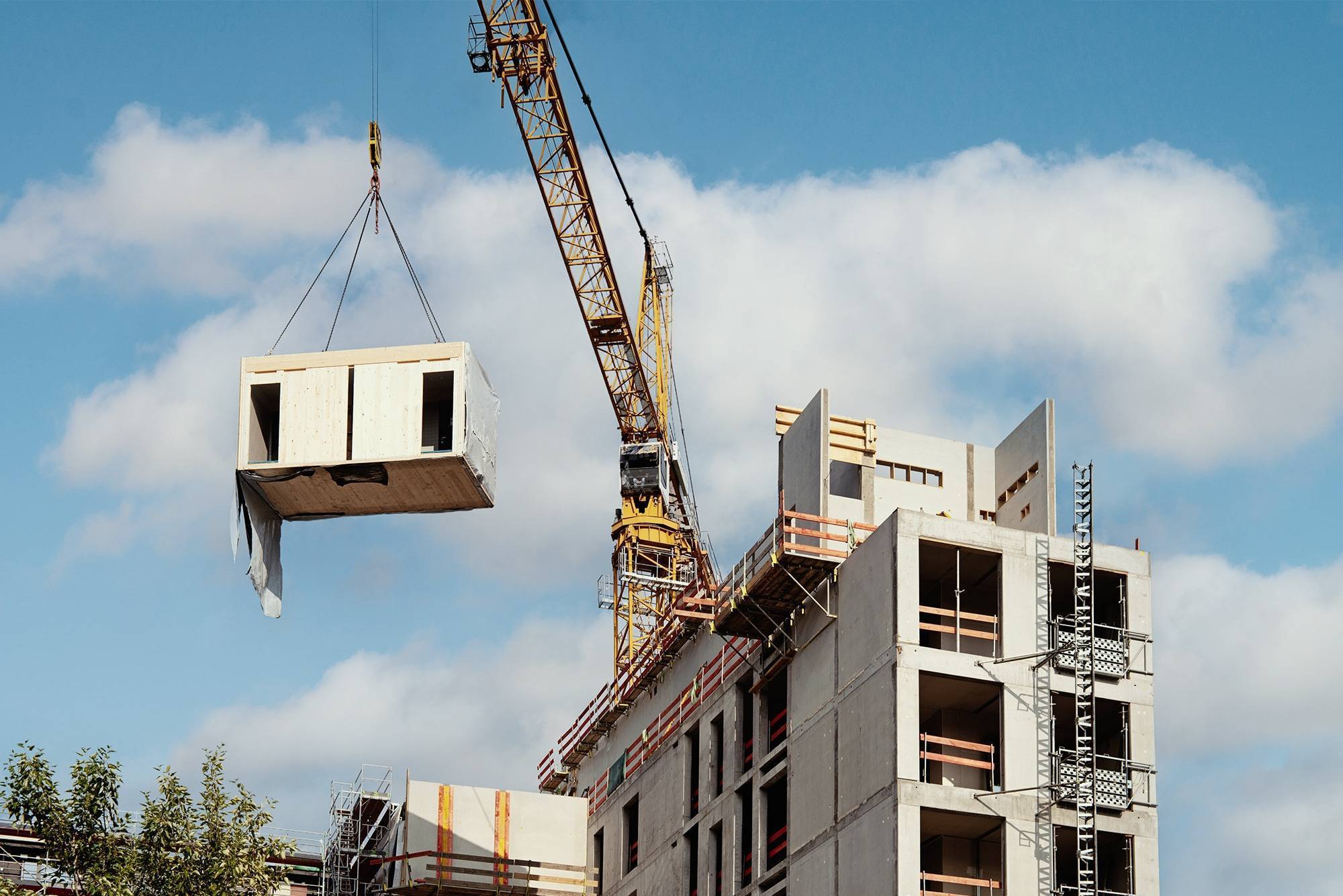Modular & Prefabricated Construction: Faster Builds with Fewer On-Site Workers
The U.S. construction industry is changing fast, and one of the biggest trends is modular and prefabricated construction. This method allows builders to assemble parts of a building in a factory and then transport them to the job site for quick installation. The result? Faster project completion, lower costs, and fewer on-site workers needed.
What Is Modular & Prefabricated Construction?
Modular construction means building sections (or “modules”) in a controlled factory setting. These modules can include walls, floors, roofing, and even complete rooms with installed electrical and plumbing systems. Once ready, they are transported to the construction site and assembled like giant building blocks.
Prefabricated (or “prefab”) construction is similar but often refers to smaller components like wall panels or roof trusses rather than full modules. Both methods reduce on-site labor and speed up construction.
Why Contractors Are Switching to Modular Construction
1. Faster Project Timelines
Traditional construction can take months or even years. Modular buildings can be completed 30-50% faster because:
– Factory work happens at the same time as site preparation.
– Weather delays are minimized since most work is indoors.
– On-site assembly takes days or weeks instead of months.
For contractors working on tight deadlines—like hotels, schools, or hospitals—this is a game-changer.
2. Lower Labor Costs & Shortage Solutions
The construction industry faces a severe labor shortage. With modular construction, fewer skilled workers are needed on-site since most labor happens in the factory. This helps contractors:
– Reduce hiring struggles.
– Cut overtime costs.
– Improve safety (factories have fewer accidents than job sites).
3. Better Quality Control
Building in a factory means:
– Fewer errors due to precise machinery.
– Consistent material quality.
– Strict inspections before modules leave the factory.
This reduces costly rework and warranty claims.
4. Reduced Waste & Sustainability Benefits
Prefab construction generates less waste because:
– Materials are cut precisely in the factory.
– Leftover supplies can be reused in other projects.
– Fewer on-site mistakes mean fewer discarded materials.
This aligns with green building trends and can help contractors win eco-friendly projects.
How Material Suppliers Benefit from Modular Construction
Suppliers of steel, wood, concrete, and HVAC components are seeing growing demand for prefab-friendly materials. Here’s why:
1. Bulk Orders & Predictable Demand
Factories need large, steady material shipments—unlike traditional construction, where orders can change daily. This helps suppliers:
– Plan production better.
– Reduce inventory costs.
– Build long-term contracts with manufacturers.
2. Customized Materials for Prefab
Some suppliers now offer pre-cut and pre-engineered materials designed for modular assembly. Examples include:
– Pre-insulated wall panels.
– HVAC ductwork made for easy installation.
– Pre-wired electrical panels.
This speeds up factory production and reduces errors.
The Role of HVAC in Modular Construction
HVAC systems are a critical part of modular buildings. Since modules are built off-site, HVAC takeoff services help contractors:
– Calculate exact ductwork, piping, and equipment needs.
– Avoid last-minute changes that delay projects.
Later, HVAC estimating services ensure budgets stay on track by providing accurate cost forecasts before production begins.
By integrating HVAC planning early, modular builders prevent costly redesigns and keep projects moving smoothly.
Challenges of Modular Construction (And How to Overcome Them)
While modular construction has many benefits, contractors and suppliers must adapt to:
1. Higher Upfront Planning Needs
– Designs must be finalized early (no easy changes later).
– HVAC takeoff services help avoid mistakes in sizing and placement.
2. Transportation & Logistics
– Large modules need special trucks and permits.
– Suppliers must ensure materials arrive just in time to avoid factory delays.
3. Limited Design Flexibility
– Modular buildings often use standard sizes.
– Custom designs may cost more but can still be done with advanced planning.
The Future of Modular Construction
As technology improves, expect:
– More automation (robotic welding, 3D printing).
– Smarter HVAC systems that are pre-installed and energy-efficient.
– Taller modular buildings (some cities already have prefab skyscrapers).
For contractors and suppliers, now is the time to invest in modular skills and partnerships. Those who adapt early will lead the industry.
Final Thoughts
Modular and prefabricated construction is transforming how buildings are made—saving time, cutting costs, and solving labor shortages. Contractors who embrace this method can win more projects, while material suppliers gain steady demand for prefab-ready products.
By using tools like HVAC estimating services and HVAC takeoff services, teams can streamline planning and avoid costly mistakes. The future of construction is modular—will your business be ready?







